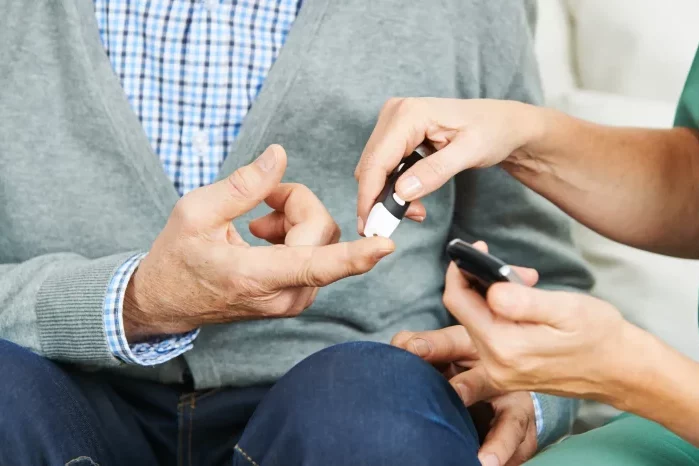Managing blood sugar levels is a critical part of living with diabetes, particularly for individuals with type 2 diabetes. One of the most effective ways to regulate blood sugar is through diet, and certain fruits have properties that can help lower blood sugar levels quickly and safely. While fruits are typically rich in natural sugars, many are also packed with fiber, antioxidants, and essential vitamins and minerals that can benefit overall health, including blood sugar control.
In this article, we will explore which fruits can help lower blood sugar quickly, explain the mechanisms behind their blood sugar-lowering effects, and discuss the best ways to incorporate these fruits into a diabetic-friendly diet.
Understanding the Impact of Fruits on Blood Sugar Levels
Before discussing which fruits can lower blood sugar quickly, it’s essential to understand how fruits affect blood sugar. The sugars found in fruits are primarily natural sugars, such as fructose, glucose, and sucrose. These sugars can impact blood sugar levels, but their effect depends on several factors, including:
Glycemic Index (GI): The glycemic index is a scale that measures how quickly a food raises blood sugar levels after consumption. Foods with a low GI (less than 55) raise blood sugar slowly, whereas those with a high GI (above 70) cause rapid increases in blood sugar. For people with diabetes, it’s crucial to prioritize low-GI fruits that do not cause sharp spikes in blood glucose.
Fiber Content: Fiber, particularly soluble fiber, can slow down the absorption of sugar into the bloodstream. Fiber-rich fruits tend to have a gentler effect on blood sugar, making them beneficial for diabetes management.
Portion Size: The amount of fruit consumed also plays a role in blood sugar levels. Eating large quantities of high-sugar fruits, even those with a low glycemic index, can lead to elevated blood glucose. Portion control is key.
Now, let’s take a closer look at specific fruits that are particularly beneficial for lowering blood sugar levels.
Fruits That Can Help Lower Blood Sugar Quickly
1. Berries (Blueberries, Strawberries, Raspberries, Blackberries)
Berries, including blueberries, strawberries, raspberries, and blackberries, are among the best fruit choices for individuals with diabetes. These fruits have a low glycemic index, meaning they do not cause rapid spikes in blood sugar. Additionally, they are high in fiber, antioxidants, and essential nutrients like vitamin C and potassium.
How They Help: Berries are rich in anthocyanins, which are antioxidant compounds that have been shown to improve insulin sensitivity and reduce inflammation. The high fiber content also helps regulate blood sugar levels by slowing sugar absorption.
Best Way to Incorporate: Berries can be added to smoothies, yogurt, oatmeal, or eaten as a snack. They can also be mixed into salads for a refreshing and nutrient-packed meal.
2. Apples
Apples are a great option for people with diabetes due to their high fiber content, especially pectin, a soluble fiber that helps regulate blood sugar levels. Apples have a moderate glycemic index, meaning they raise blood sugar levels slowly.
How They Help: Apples contain both soluble and insoluble fiber, which helps slow down the digestion and absorption of carbohydrates. They also contain antioxidants like flavonoids that may reduce the risk of developing complications related to diabetes.
Best Way to Incorporate: Apples can be enjoyed as a whole fruit, added to salads, or used as a topping for oatmeal. Pairing an apple with a protein-rich food, like nuts, can further help regulate blood sugar levels.
3. Pears
Pears are another high-fiber fruit that can help regulate blood sugar levels. They have a low glycemic index and are an excellent source of vitamin C, potassium, and antioxidants. The high fiber content, especially in the skin, helps manage blood sugar spikes.
How They Help: The fiber in pears, particularly soluble fiber, can help improve insulin sensitivity and reduce blood sugar fluctuations. They also help promote satiety, which may assist in weight management.
Best Way to Incorporate: Pears can be eaten on their own, added to salads, or baked with cinnamon and a small amount of sweetener for a healthy dessert.
4. Cherries
Cherries, particularly tart cherries, have a low glycemic index and are high in antioxidants, including anthocyanins, which are believed to help improve insulin sensitivity. These antioxidants may also play a role in reducing oxidative stress, which is a concern for people with diabetes.
How They Help: Studies suggest that cherries can improve blood sugar control by reducing insulin resistance. The antioxidants in cherries may also help reduce the risk of cardiovascular complications in people with diabetes.
Best Way to Incorporate: Fresh or frozen cherries can be added to smoothies, yogurt, or eaten as a snack. Tart cherry juice, when consumed in moderation, can also offer benefits for blood sugar management.
5. Grapefruit
Grapefruit is known for its ability to help lower blood sugar levels and improve insulin sensitivity. It is a low-glycemic fruit and contains fiber, vitamin C, and antioxidants that support overall health.
How They Help: Grapefruit contains compounds such as naringenin, which may help improve insulin sensitivity and reduce blood sugar levels. Some studies suggest that grapefruit can also help lower triglyceride levels, which is beneficial for cardiovascular health.
Best Way to Incorporate: Grapefruit can be eaten as a fresh fruit or added to salads for a burst of flavor. Grapefruit juice should be consumed with caution, as it may interfere with certain medications.
6. Avocados
While technically a fruit, avocados are often overlooked when it comes to blood sugar management. They are low in sugar and high in healthy monounsaturated fats, making them an excellent choice for people with diabetes.
How They Help: Avocados help regulate blood sugar levels by slowing down the digestion of carbohydrates. The high fiber and healthy fats in avocados promote satiety, making it easier to manage hunger and avoid overeating.
Best Way to Incorporate: Avocados can be eaten on their own, spread on whole-grain toast, added to salads, or blended into smoothies for a creamy texture.
7. Kiwi
Kiwi is a low-glycemic fruit that is rich in vitamin C, fiber, and antioxidants. It is a great option for people with diabetes who want to improve their blood sugar control while benefiting from the fruit’s high nutrient content.
How They Help: Kiwi contains soluble fiber, which helps regulate the absorption of sugar into the bloodstream. It also contains antioxidants like flavonoids and carotenoids, which may help reduce oxidative stress and inflammation associated with diabetes.
Best Way to Incorporate: Kiwi can be eaten on its own or added to fruit salads, smoothies, or yogurt.
8. Plums
Plums are another low-glycemic fruit that can be beneficial for blood sugar management. They are rich in fiber, vitamins, and antioxidants, which help regulate blood sugar levels and improve overall health.
How They Help: Plums contain anthocyanins, which have been shown to improve insulin sensitivity and reduce blood sugar levels. The fiber in plums helps slow down sugar absorption, making them a great option for people with diabetes.
Best Way to Incorporate: Fresh plums can be eaten as a snack, or they can be added to salads, baked goods, or smoothies.
9. Peaches
Peaches are low in calories and rich in vitamins A and C, as well as fiber. With a low glycemic index, they are an excellent choice for people with diabetes looking to control their blood sugar levels.
How They Help: The fiber and antioxidants found in peaches help regulate blood sugar levels and improve insulin sensitivity. The fruit’s natural sugars are absorbed slowly, which helps avoid sharp spikes in blood sugar.
Best Way to Incorporate: Peaches can be eaten fresh, added to salads, or baked with a sprinkle of cinnamon for a healthy dessert.
10. Papaya
Papaya is another tropical fruit that can help lower blood sugar levels due to its fiber content and low glycemic index. It is also rich in vitamin C, which supports the immune system and overall health.
How They Help: The fiber in papaya slows down the absorption of sugar, preventing rapid blood sugar spikes. Additionally, papaya contains enzymes like papain, which may help improve digestion and reduce inflammation.
Best Way to Incorporate: Papaya can be eaten fresh, added to smoothies, or paired with other fruits in a tropical fruit salad.
General Guidelines for Including Fruits in a Diabetes Diet
While the fruits mentioned above can help lower blood sugar levels, it’s important to remember that portion control is key. Eating large amounts of even low-glycemic fruits can lead to blood sugar fluctuations. Here are some tips for including fruit in a diabetes-friendly diet:
Choose Whole Fruits: Whole fruits contain fiber, which helps regulate blood sugar. Avoid fruit juices and dried fruits, which are concentrated sources of sugar and lack fiber.
Pair Fruit with Protein or Healthy Fats: Pairing fruit with a source of protein (such as nuts, seeds, or yogurt) or healthy fats (such as avocado) can help stabilize blood sugar levels and promote satiety.
Limit High-Sugar Fruits: Some fruits, like grapes, bananas, and pineapples, are higher in sugar and may cause blood sugar spikes. While they can be enjoyed in moderation, it’s important to be mindful of portion sizes.
Conclusion
Fruits are an essential part of a healthy diet, and many fruits can help lower blood sugar levels quickly and effectively. Berries, apples, pears, cherries, grapefruit, avocados, kiwi, plums, peaches, and papaya are some of the best options for people with diabetes due to their low glycemic index, high fiber content, and beneficial antioxidants. By incorporating these fruits into a balanced diet, individuals with diabetes can enjoy a variety of flavors while helping to manage their blood sugar levels. Always remember to monitor blood sugar levels regularly and consult with a healthcare provider before making significant changes to your diet.
Related topics:
Can You Eat Bananas with Diabetes Type 2?



























